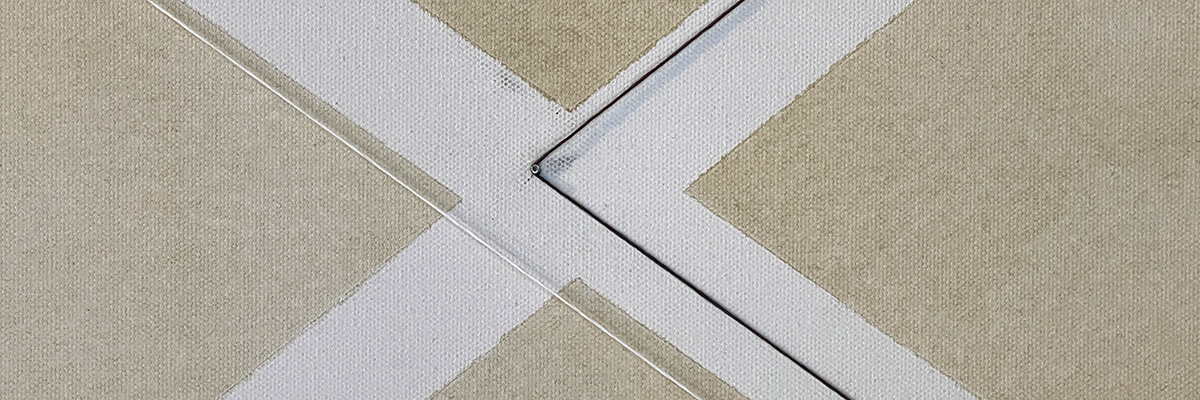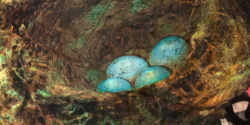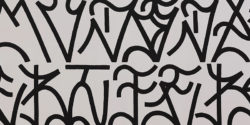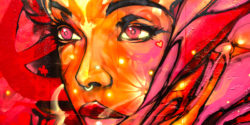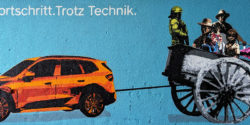Assemblage and collage don’t get much attention in the street art scene, let alone the graffiti scene, perhaps because these art-making techniques will not typically trigger police sirens and lights. You may be thoughtfully arranging a composition of found wood and metal elements from a nearby dumpster on the derelict wall of an abandoned building at 11 pm for no apparent reason – but that hardly reeks of vandalism. There’s no wild tagging scrawl, no aerosol cans, no bubbles, no drips, no silver fill, no dramatic fence-jumping. For that matter, this kind of work can look like fence-mending. Now that you think of it, assemblage and collage-making may be precisely an ideal vehicle for subversion.
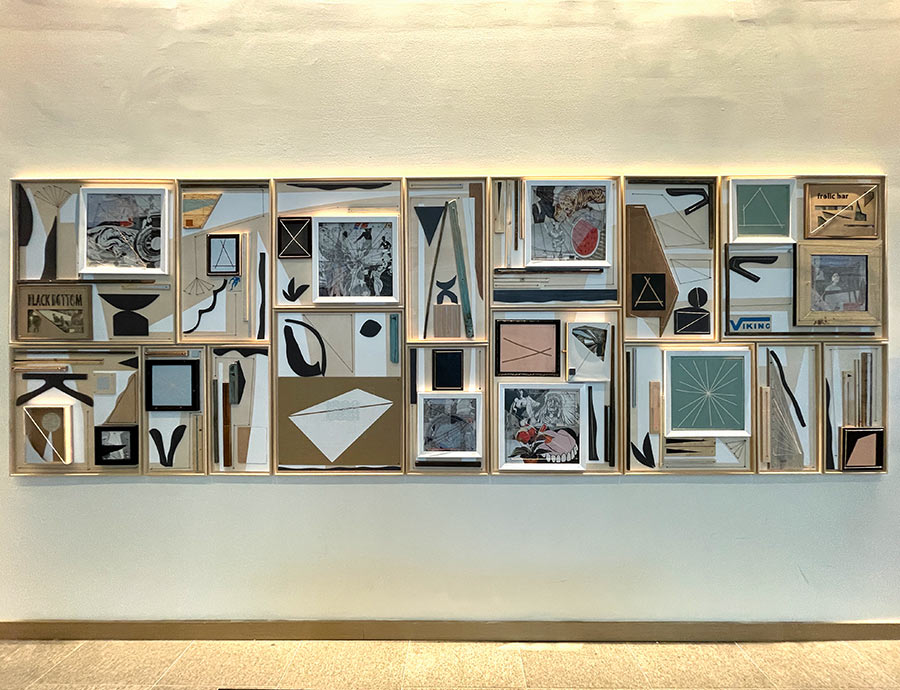
Hyland Mather has been pounding together assemblages on the street for more than a decade – a gathering of the discarded of society into new relationships, new families. He’s been scanning the city horizon and collecting for a while – doing it so long that sometimes he feels like he may be a hoarder, but this search and rescue operation continues apace. His collections of objects are more like orphans given new homes, not discarded but simply lost. Whether drawn from city margins, dumpsters, post-industrial heaps, each element is adorned and joined with others. Maybe it is just an extension of the Western world’s consumerism of the last half-century, but perhaps it is also an inclusive practice of making sense from the chaos, finding great value and beauty in the discarded.
Now dividing his time between living in Portugal and in Amsterdam, and curating for STRAAT museum in Amsterdam, the Denver artist also collects and represents other artists and creates street-based artworks in many cities – a unique blending of elements, roles, and families that further evolves his profile. Here in a hotel lobby at the center of a Jersey City arts center revival, his found elements are appropriate; moving and mobile and newly combined and interconnected in an act of his ongoing global/local travels.
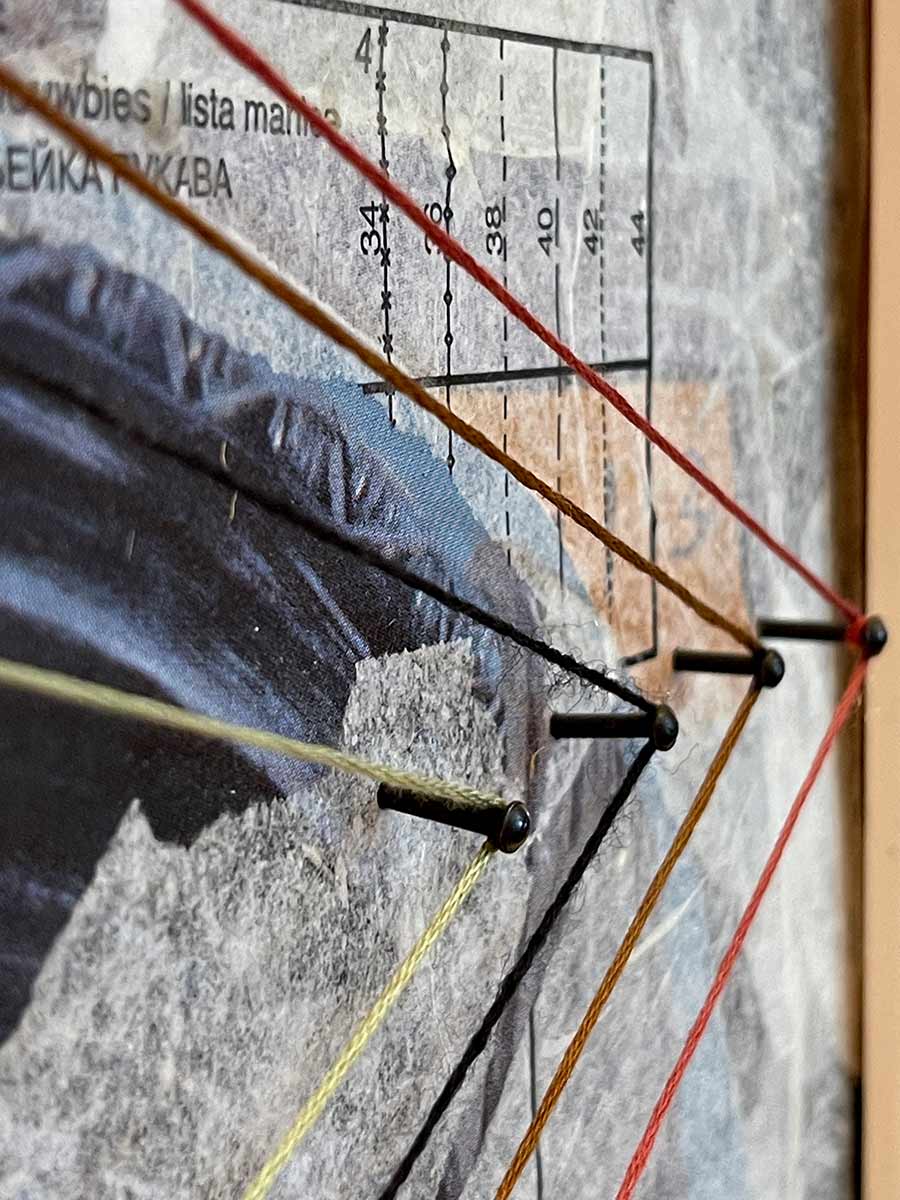
He calls the two-part installation his “Ocean of Being.” If their shapes, symbols, textures, and relationships are biographical, the stories are subterranean. Curated by DK Johnston for The Arts Fund, Mr. Mather tells us that it is an installation of two significant works named Viking Frolic Bar and Black Bottom/Foggy Eyes, “paired together for the first time as a massive installation of assemblage and collage.” Wood, acrylic, aerosol, objects, paper, canvas, frame; all gathered and working alongside, in tandem, in a constructed harmony unified by a calmed, natural palette and tied together with string, a “geometric component floating lightly above”.
Additional works completed in situ and for other projects are on display- gallery works and works on paper from what he calls his ‘Emblematum’ series.
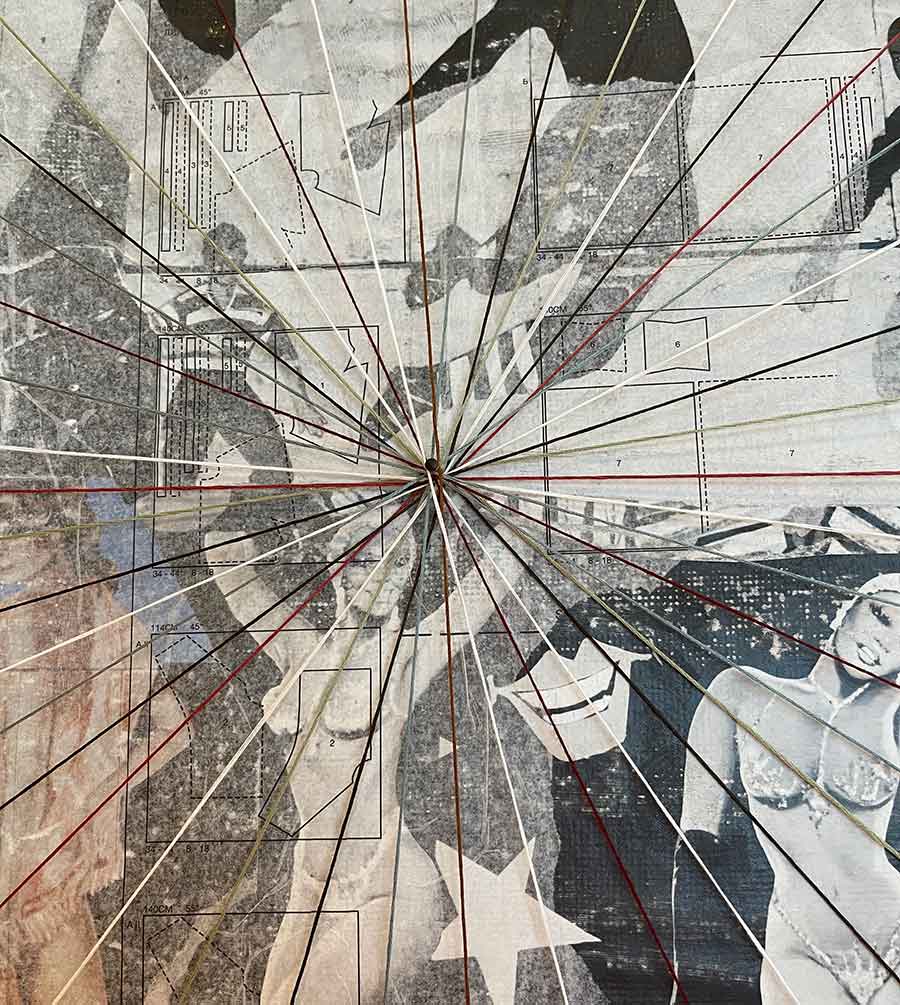
“These text-based pieces use imagery harvested from the pre-war (1930’s) Dutch magazine, Panorama, and post-war (1950-1960) photography from period photo journals,” his description says. He was aiming to “create a dreamlike collage behind ambiguous but uplifting slogans like the project title, ‘Ocean of Being’.
BSA spoke to Hyland Mather about his work, his influences, his strings, and his new indoor exhibition.
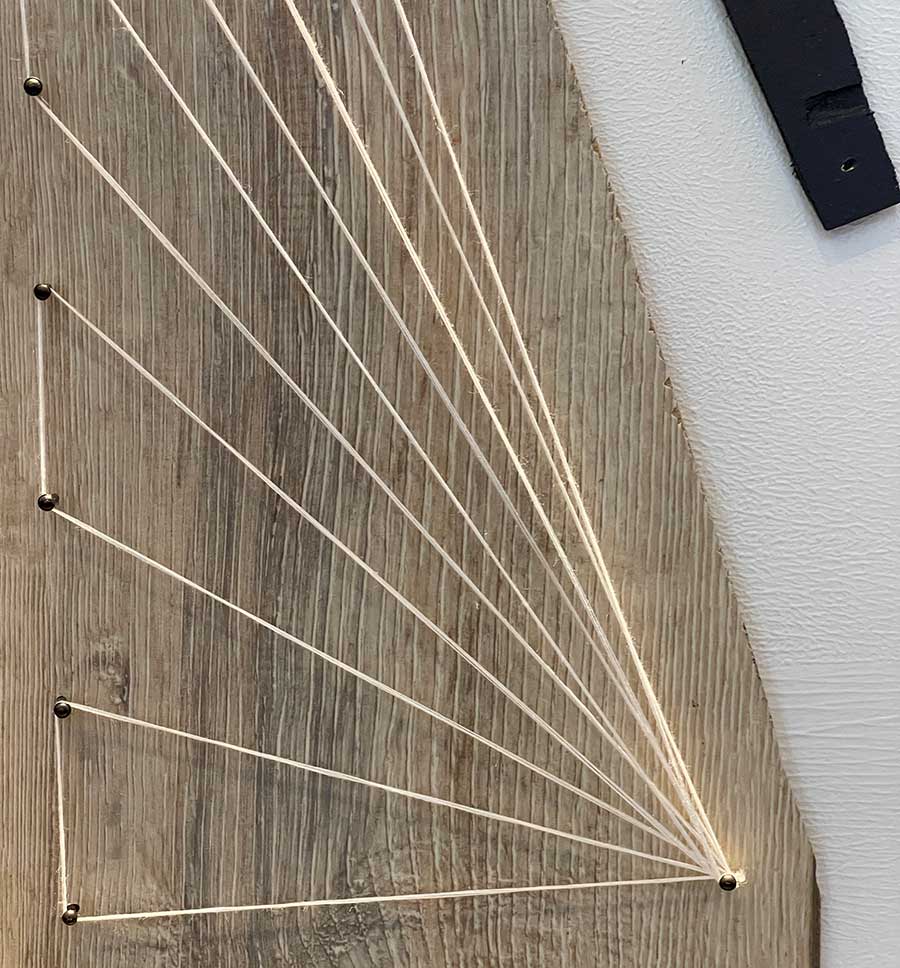
BSA: Is this your first project in the USA after two years of the Covid Pandemic? If so how did you feel being able to travel again to execute your work as an artist?
Hyland Mather (HM): Actually, I guess you could say I was lucky, I had a bit of a ‘golden ticket’ in terms of travel documents during the height of the pandemic with a European residency permit and a US passport. I did a bunch of large mural projects in the States in 2020 and 2021 and was in Philadelphia for an exhibition at Paradigm last July. I will say it was an odd combo of super easy and super eerie traveling when the planes and airports were nearly empty.
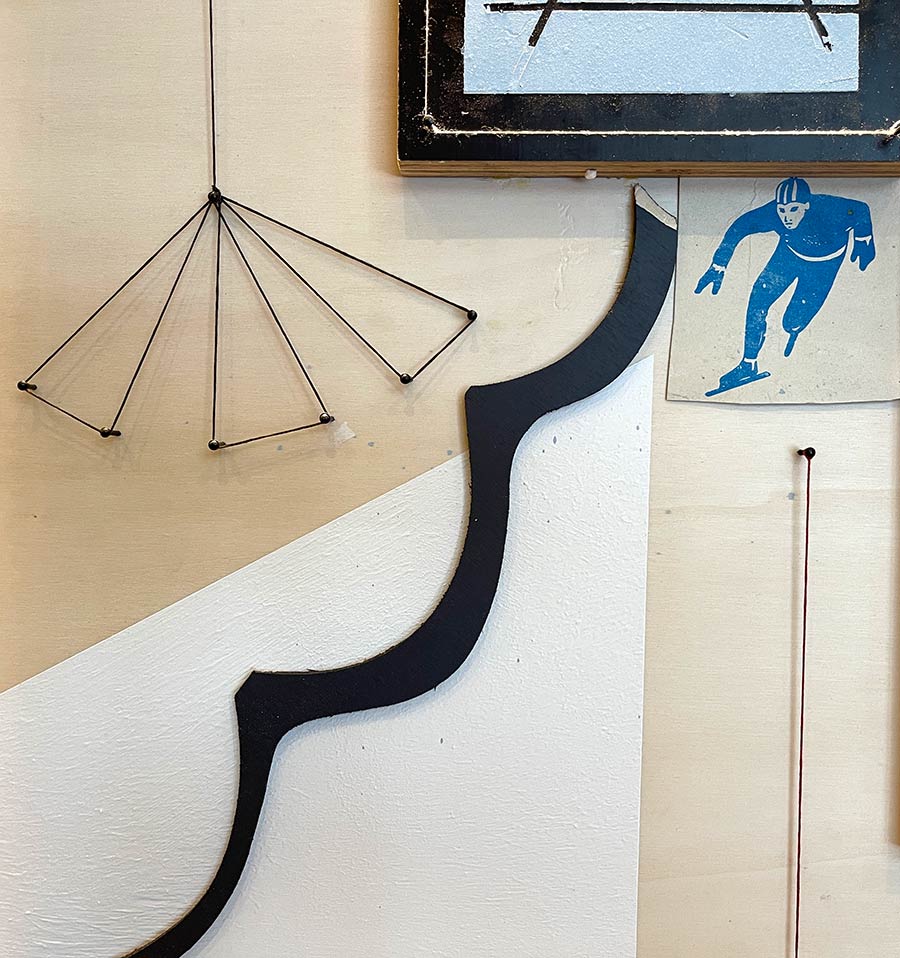
BSA: “Ocean of Being,” which is the title of your exhibition, does it refer to seeking balance, silence, meditation? The oceans are vast, and one can imagine being in the middle of them in complete silence, but not necessarily at peace since they can be turbulent and dangerous.
HM: You’re pretty right on about this. I took the title from a Hindu idea, Brahman Ātman. Where Brahman represents the unfathomable, immeasurable vast ocean of space, consciousness, and time and Ātman represents a tiny sample, or a water droplet in that ocean. In the Lost Object installations, the objects in the install are a small sample representing a vast ocean of discarded objects that are around us everywhere, all the time.
In the text-based works on paper, the collage backgrounds under papercut slogans make a kind of balance, where the slogan itself is like a cup of water and the collage underneath represents a vast ocean of imagery associated with the words. The string paintings, Linea Pictura paintings, are also related to the Brahman Ātman meditation where the soft, loose, abstract backgrounds form the ocean upon which the crisp floating lines hover over…like a droplet of water in the air when waves collide.
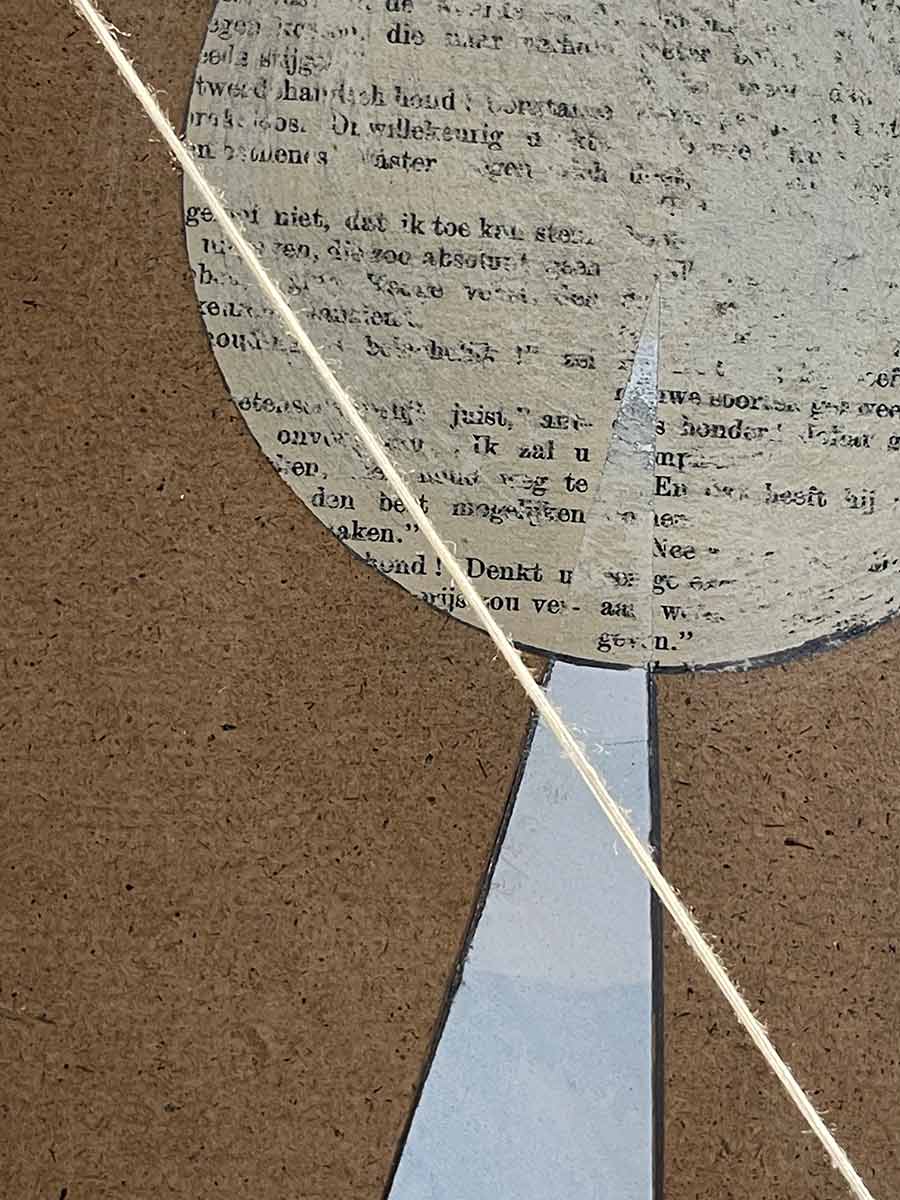
BSA: Is your predilection for using found objects in your art purely as art materials or are you being conscientious about the environment by creating as much as you can with discarded objects?
HM: This is an awesome question, and I think about it a lot. In the beginning it was never about the environment, it was purely meditation and aesthetic. However, over time, especially working with recycling centers and junk yards when collecting materials, I’ve come to really see what’s going on with waste and it is, and I mean this sincerely, insane.
I remember once going into the recycling center at the University of Oregon and seeing a huge industrial size hospital style laundry basket just filled to the brim with old CD’s. The woman who ran the program was in shambles…she just pointed at the CD’s and said something like, ‘We’re a conscientious university town and there is just no way we can even begin to put a dent in how much recyclable trash there is even in our community’. It was pretty sad to see this front line activist super disheartened.
I do have this dream project to work with some major player like Amazon, Ikea or Walmart to create a partnership where I make things with the mountains of stuff that they destroy when people return things. I just can’t wrap my head around how their PR departments would spin that … first they’d have to admit how much stuff is destroyed.
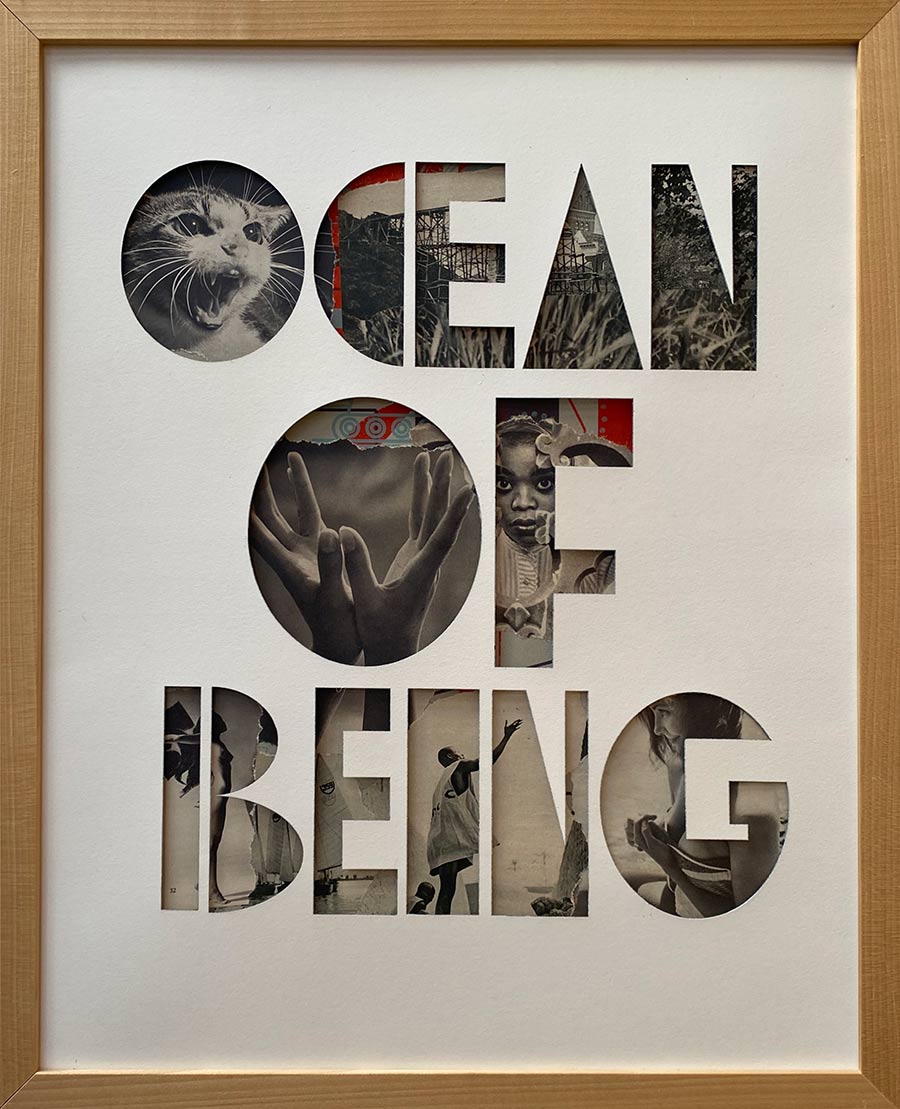
BSA: What’s is the process for your text-based series? Do you come out with the text first then you find the images for the background? Or is it the opposite?
HM: The text works (Emblematum) are about wide ideas expressed in simple language. An expression like ‘Under The Sun’ has so many possibilities for interpretation…like a pretty day at the beach, or wild flowers on the prairie, or something darker like desertification, or inmates busting up rocks. Almost always it’s the text first, then the collages underneath, but the collages themselves are often fun to compose separately. It’s an enlightening exercise digging through old magazines and gauging the temperature of culture from a time period that is not so far in the past.
I have a lot of old Dutch Panorama magazines from the 1930s and 1940s that I found behind an old book store in Amsterdam. Panorama was comparable to Cosmo or something like that… it’s crazy to look at one from say late 1939 or early 1940 and there is absolutely no temperature of the war that was already raging in Poland and Czechoslovakia, and in a few short months would overrun the Netherlands as well, yet it’s still just ads for toothpaste and puff pieces on fishing.
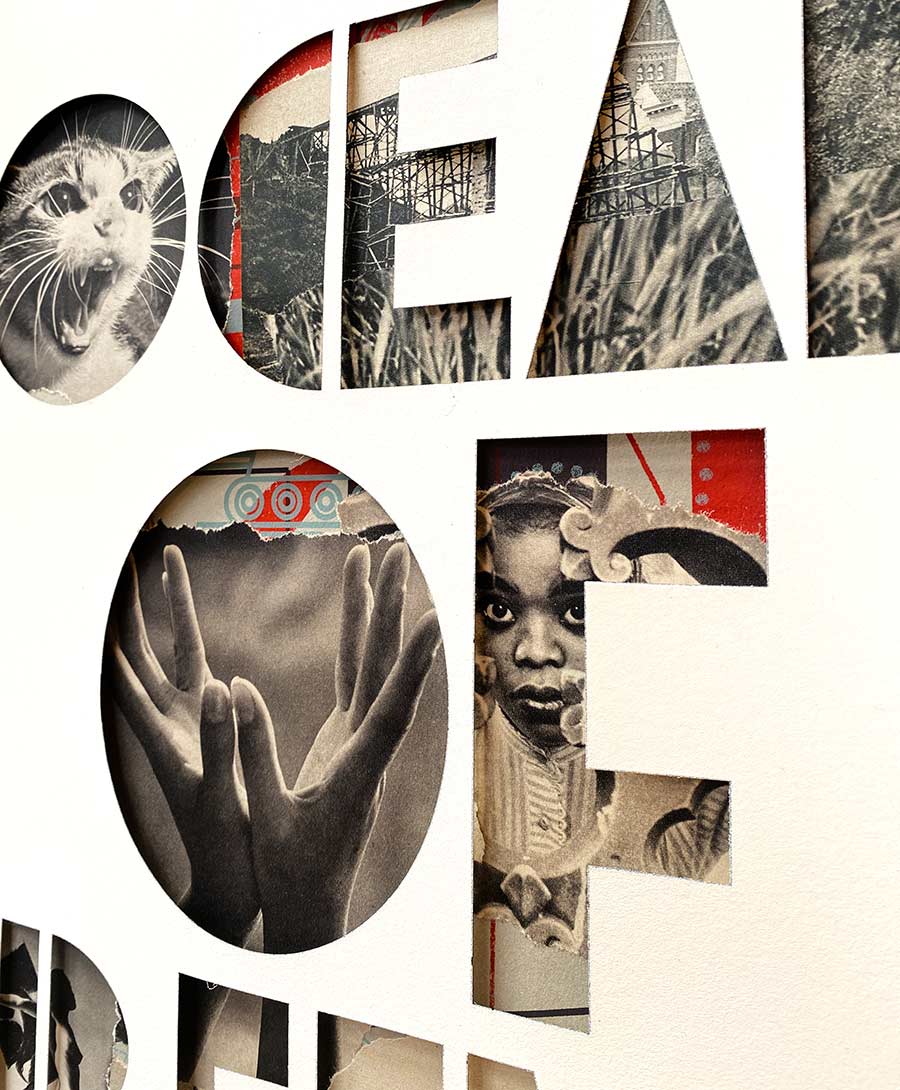
BSA: In your Linea Picture series one experiences the rigidity of the string and the beauty of the geometry but at the same time the soft yarn plays with the soft brushed, curvilinear work on the canvases. How would you describe this dual personality?
HM: This is such a flattering description, thank you. I’m happy with this work. This is the newest part of my practice and I feel like it’s taken me many years to arrive here. I’m not sure I can say it much better than you just did. String has been a tool I use in my work for a long time. I love how delicate it is and yet when stretched taut how precise it is. It’s kinda fetishy. The abstract painterly backgrounds are super meditative for me to make and put a great deal of peace into me as I’m working on them, but as artworks these pieces don’t feel complete for me until the string components are added, and a balance is achieved. I also really enjoy the shadow casting that the floating strings have on the surface of the canvases.
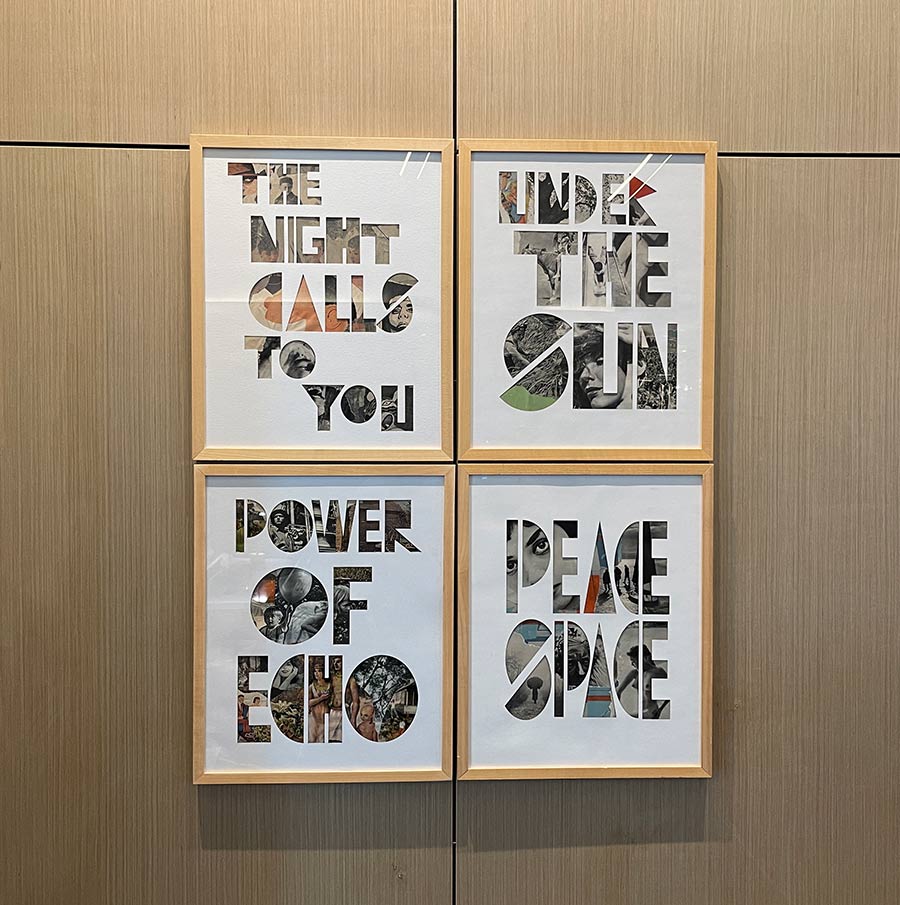
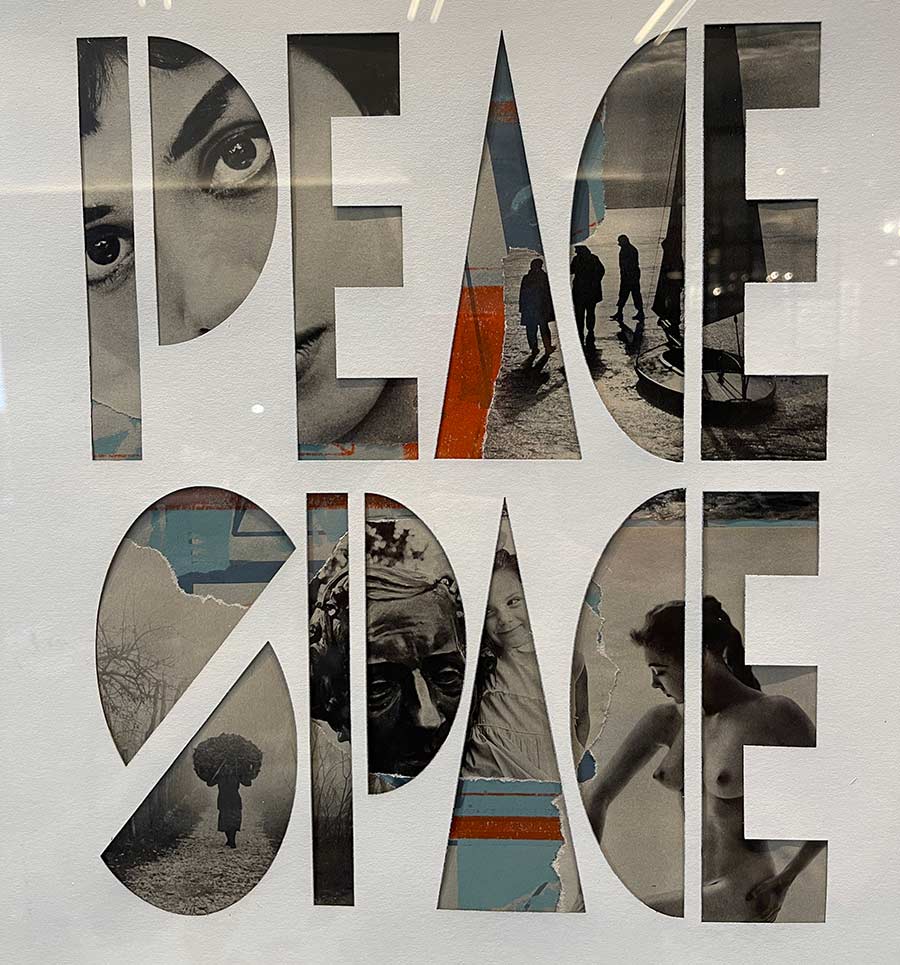
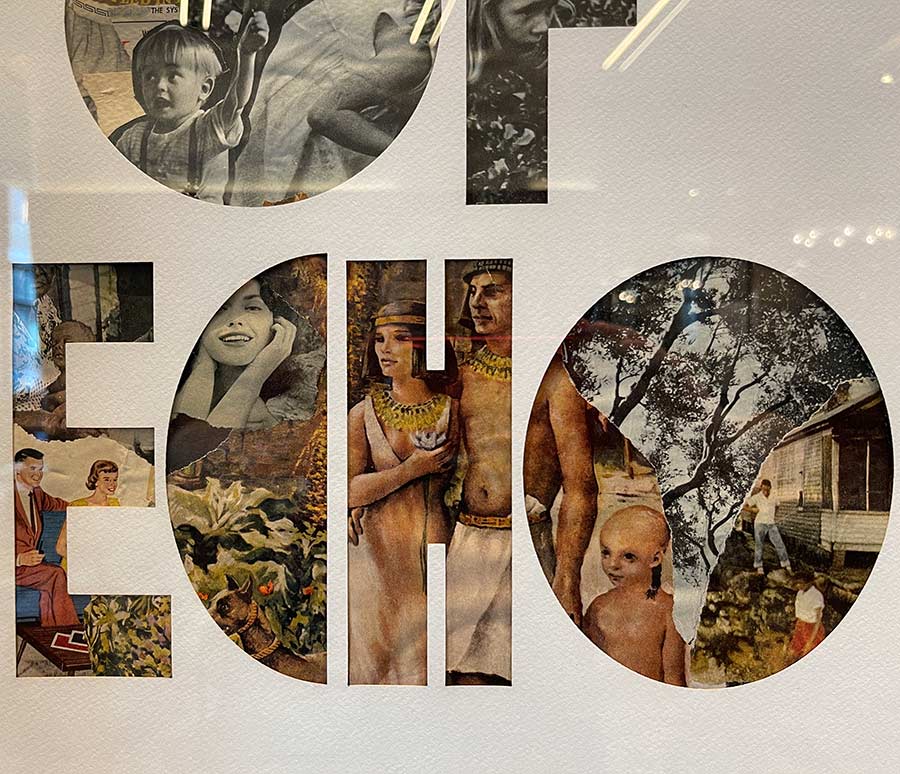
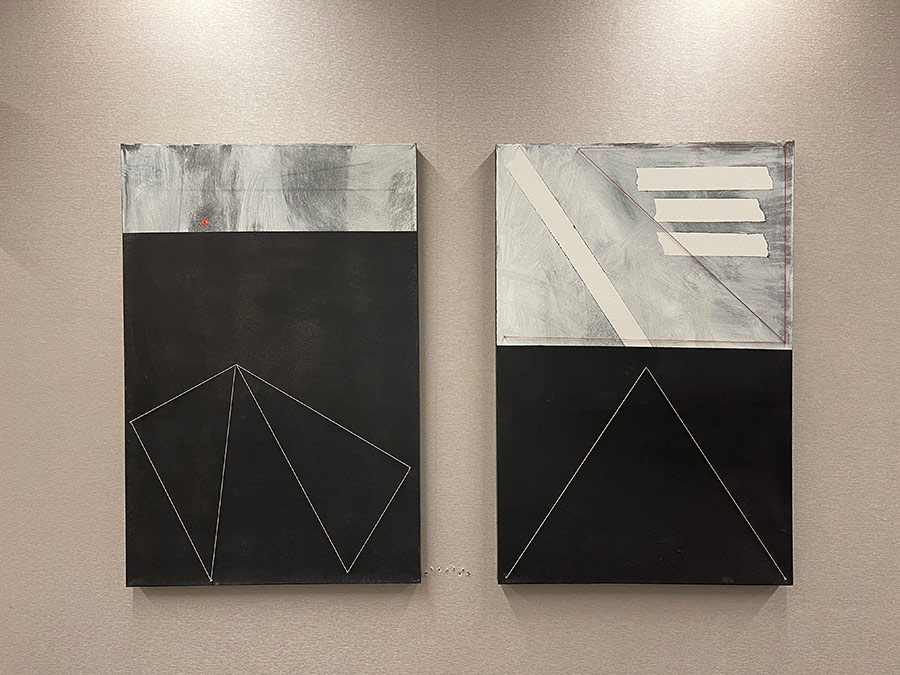
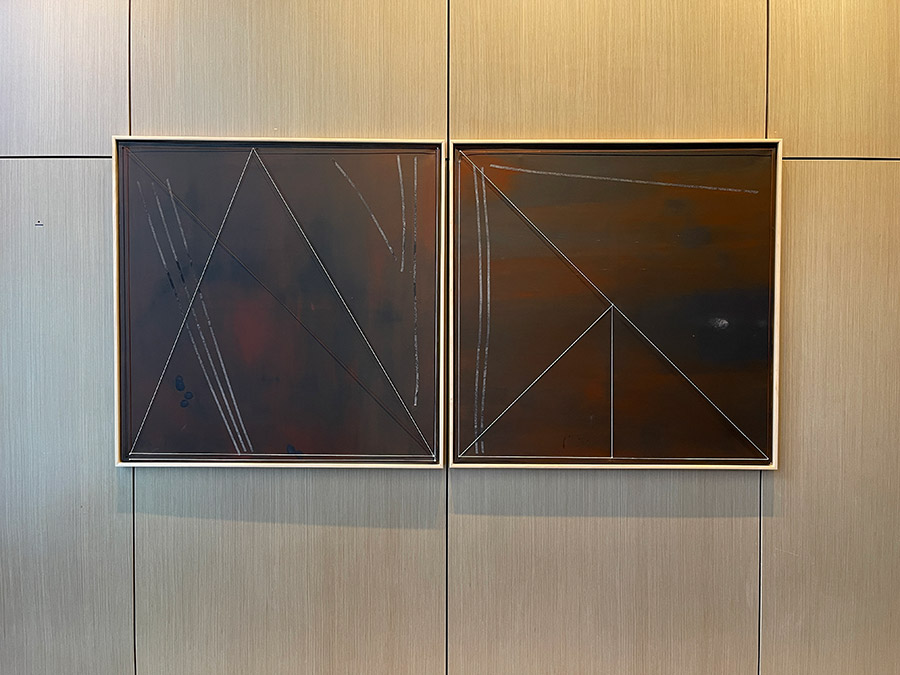
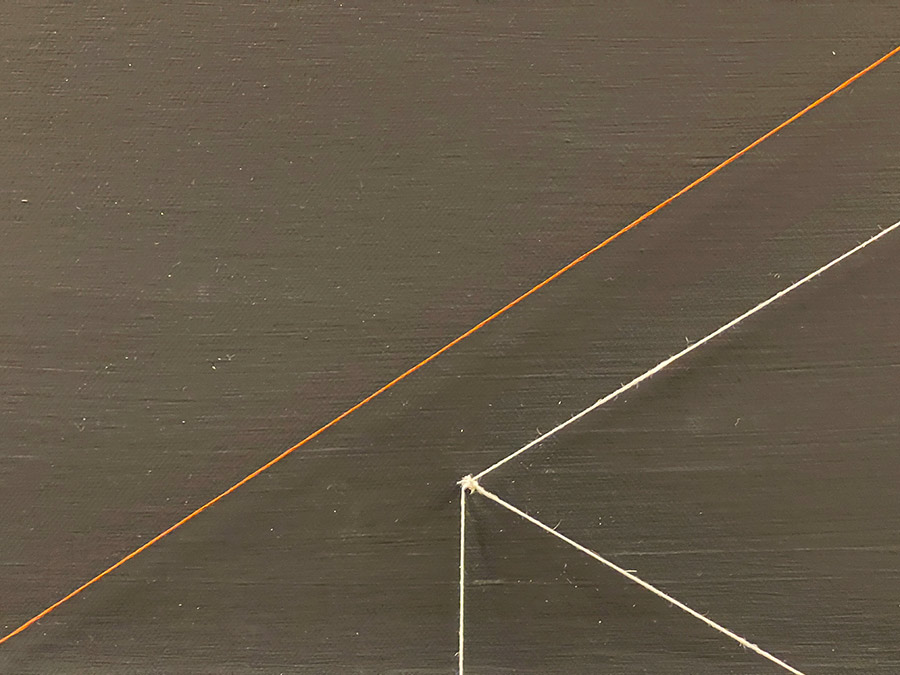

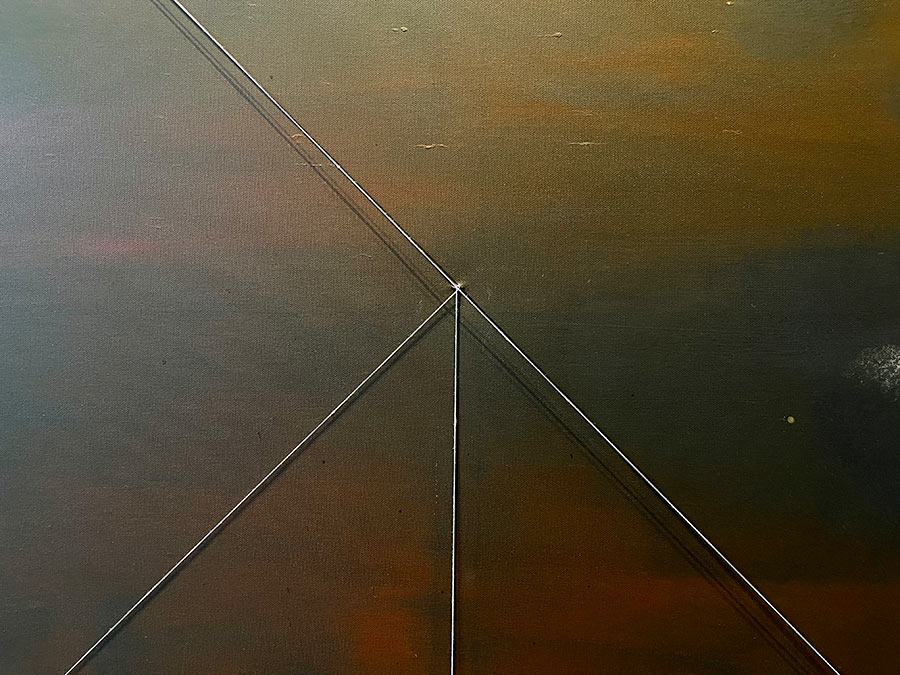
Ocean of Being is a project by artist Hyland Mather (@thelostobject), hosted by Canopy Hotel of Jersey City. The exhibition is curated by DK Johnston, founder of The Arts Fund.
 BROOKLYN STREET ART LOVES YOU MORE EVERY DAY
BROOKLYN STREET ART LOVES YOU MORE EVERY DAY